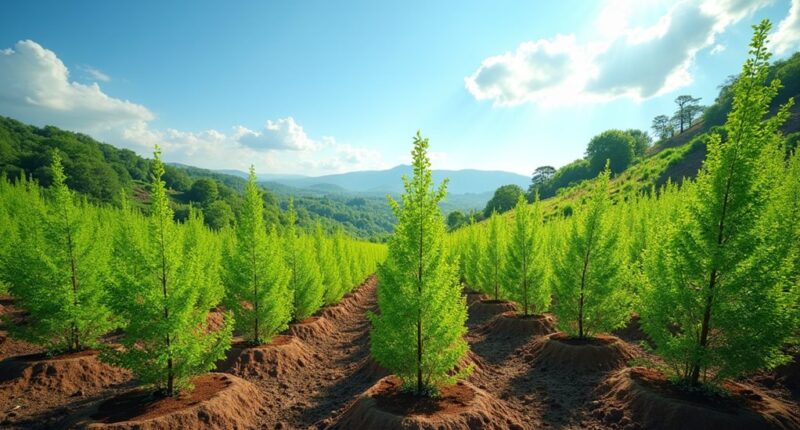In a remarkable display of cooperation, a new partnership has successfully planted 8,000 trees, demonstrating that restoring our planet can be as straightforward as digging a hole and dropping in a sapling. This initiative is more than just a feel-good story; it’s an essential step towards combating climate change and enhancing biodiversity, two challenges that often feel as intimidating as trying to untangle a set of Christmas lights.
Trees are nature’s unsung heroes, absorbing carbon dioxide and capturing over 15 billion metric tons of it annually. Think of them as the earth’s lungs, breathing in pollution while exhaling fresh air. Planting native species, in particular, promotes ecosystem balance, ensuring that local flora and fauna have a fighting chance against invasive species that may disrupt the neighborhood. It’s like inviting the right guests to a party, ensuring everyone gets along instead of causing a scene. Additionally, trees help retain water and soil, preventing flooding and promoting healthier landscapes.
Trees act as the planet’s lungs, balancing ecosystems and giving native species a chance to thrive.
However, large-scale reforestation isn’t without its hurdles. Monoculture plantations—those single-species tree farms—often fail to support the rich biodiversity that thriving ecosystems demand. And let’s not forget the potential pitfalls of planting trees in unsuitable areas, which can ironically contribute to global warming instead of fighting it. Just imagine putting a polar bear in the Sahara; not the best habitat choice. Additionally, programs like the American Forests have been instrumental in establishing the national forest system and supporting reforestation efforts across the U.S.
Partnerships like the one behind this initiative not only enable tree planting but also foster education and community involvement. The National Forest Foundation, for example, has helped plant over 7 million trees in just one year, proving that teamwork makes the dream work—even if that dream is about saving the planet. Implementing sustainable forest management practices ensures these newly planted areas will continue to provide ecological benefits while meeting human needs for timber and resources.
As we look forward, the goal to plant one trillion trees by 2030 through global initiatives like 1t.org seems ambitious but achievable. Each sapling represents hope—a living proof of humanity’s resolve to restore our planet.









